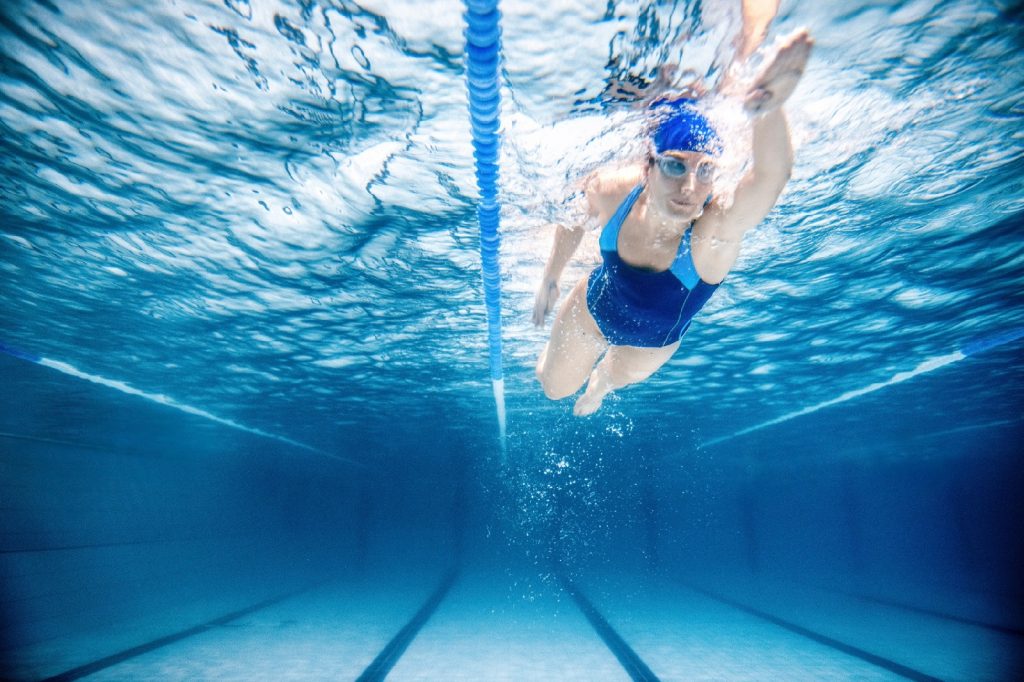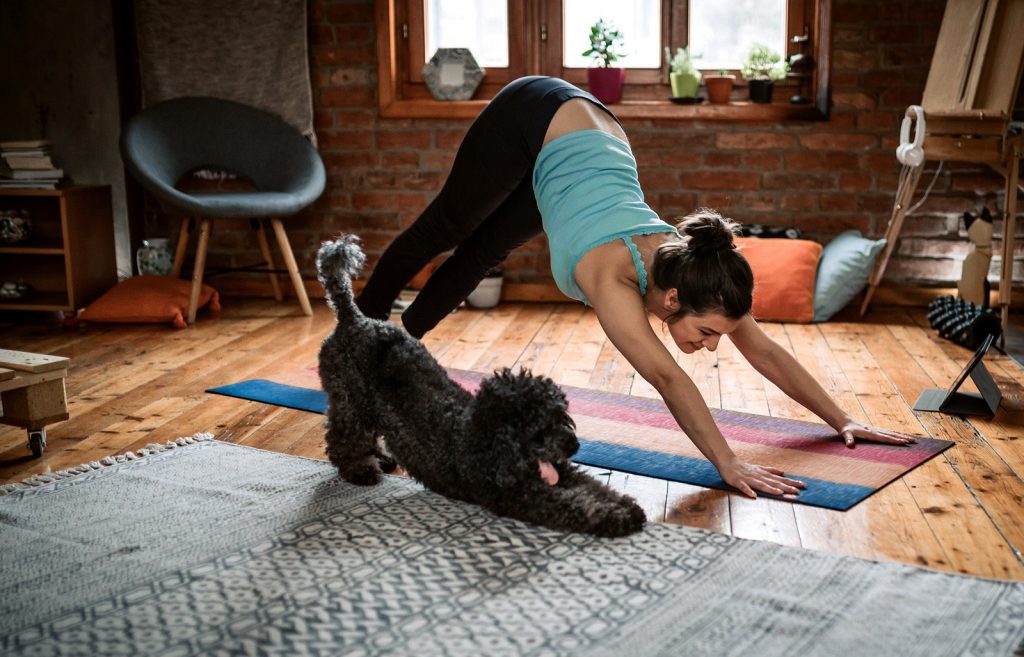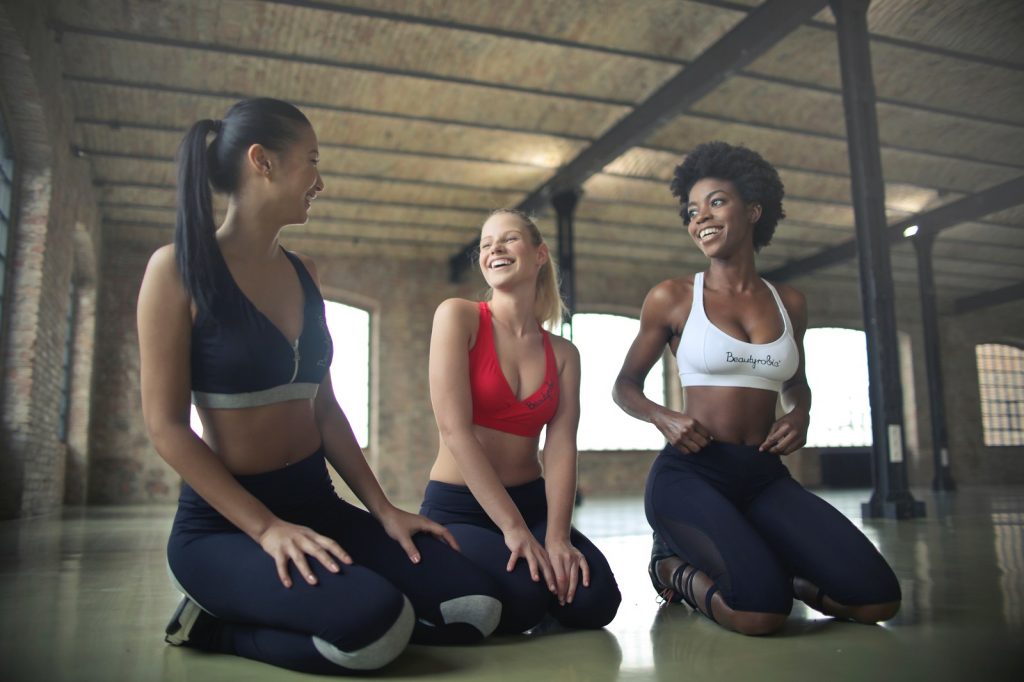While many women do not experience pain with their uterine fibroids, others do. And that discomfort can make staying active challenging. As a result, some women who are used to working out may think fitness and fibroids don’t mix—that they need to reduce or stop physical exercise altogether to avoid aggravating their fibroid symptoms. While you may need to stay away from some strenuous activities such as bending and heavy lifting, many fitness solutions exist to help you stay active.
Not only do fitness and fibroids work well together but strengthening the body has been proven to manage undesirable fibroid pain, reduce fibroid growth, and produce a hormone called endorphins that makes you feel good.
Fitness and Fibroids: An Overview
What Are Fibroids?
Fibroids are benign tumors that develop from the muscle tissue of the uterus. Fibroids are more common in women ages of 35 and 54. However, fibroids can occur in women younger than 35 and until menopause. They occur more often in Black women.
Uterine fibroids can cause painful and life-altering symptoms for many women, especially as fibroids grow and put more pressure on the uterus and bladder. Many patients have one or several fibroids that differ in size and either stay that way or grow at different rates, causing symptoms such as:
- Heavy menstrual bleeding
- Periods that last longer than a week
- Pelvic pain or pressure
- Pain during intercourse
- Urinary frequency
- Back or leg pain
- Excessive fatigue and weight gain
There are several factors that cause fibroids to grow and possibly become painful. One of the biggest is that they are under hormonal control. Fibroids tend to swell and grow faster during childbearing years when hormone levels are at their highest. This is where regular exercise can help.
Exercising with Fibroids
Fitness solutions for women with fibroid pain can reduce the production of estrogen and progesterone and regulate hormone levels that may affect fibroid growth. While fitness and fibroids do not change your risk of fibroids, studies have found that exercise of three or more hours per week reduces your risk of fibroids by about 30-40%.
Fitness solutions, including low-intensity exercises, can also help:
- Maintain a healthy BMI — Obesity is a risk factor for fibroid growth. It also contributes to telltale fibroid symptoms such as back and pelvic pain. A healthy BMI, or Body Mass Index, is between 18.5 and 25.
- Boost production of endorphins — Endorphins are a feel-good hormone. They relieve stress, improve your mood, and are also natural painkillers for symptoms such as menstrual cramps, back and leg pain. By exercising, you increase your heart rate and stimulate the production of endorphins.
- Increase energy levels — Many women who experience painful uterine fibroids complain that they feel tired all the time. Most of this is associated with heavy menstrual bleeding. It can also be related to anemia. Staying physically active keeps your energy levels higher and gives you the boost that you need.

4 Fitness Solutions for Women with Fibroid Pain
The first step with any fitness routine is to listen to what your body is telling you. If it doesn’t feel right, or the combination of fitness and fibroids is causing you pain, stop. But it is important to try not to give up on physical activity entirely. If you are experiencing painful fibroids, adjust your regimen. Avoid engaging in intense or vigorous exercises that cause you stomach pressure or pain during or after exercising. Crunches and sit ups may be more difficult and painful with fibroid growth.
Instead, focus on the following exercises, all of which promote cardiovascular conditioning and weight loss.
- Yoga — Yoga is low impact, total body fitness that improves strength, balance, and flexibility. Because of the postures involved, it can open the abdominal area, stimulate the uterus and ovaries, and help alleviate fibroid discomfort for some women. Fibroids aside, yoga is proven to effectively manage stress, decrease back pain, increase energy and mood, promote weight loss, detoxify the body, and more.
- Swimming, biking, walking, and light jogging — Swimming, walking, and even riding a bike consistently each week are cardiovascular in nature and help fitness and fibroids coexist. Not only are these easy on the joints, but all four raise your heart rate and help you maintain a healthy weight.
- Light weight training — Doctors typically advise to avoid heavy weightlifting and training if the size of the uterus enlarged by fibroids preclude bending or moving in a way that allows optimum and safe technique for the lift. Patients have shared that heavy lifting made fibroid pain worse for them. If you crave weight training, switch to a combination of light weights and higher repetitions. You can also do bodyweight exercises rather than picking up dumbbells.
- Stretching — Granted, some stretching movements may be difficult to perform when you have severe fibroid pain. But light stretching performed at a slow pace is achievable for many women in your situation. Combining basic stretching with breathing exercises can help promote weight loss and reduce stress.

Consider UFE Treatment for Your Fibroid Pain
Exercising alone will not cure you of your fibroids, but fitness and fibroids can have an impact. If you’re looking for an alternative to surgery, consider UFE.
Uterine Fibroid Embolization (UFE) is a unique procedure for fibroid treatment. It can treat uterine fibroids with multiple locations and sizes without having to go through a painful surgery and lengthy recovery time. During UFE interventional radiologists use X-ray guidance to inject small particles into the blood vessels with a slender, flexible tube or catheter. This blocks blood flow to the fibroids and causes them to shrink and die, leading to over 90% reduction in symptoms for many women.
The procedure takes approximately one hour. You will be asleep the entire time. Our fibroid experts perform the procedure in-office, so there is no hospital stay. When the procedure is complete, you can resume light activities as soon as you feel up to it. Most women return to work or regular daily activities in 7-10 days.
Advantages of UFE Include
- Performed under anesthesia
- No incision, no scarring
- Uterus is spared
- Avoids side effects of hormone therapies typically used to treat fibroids
- Fibroid-related symptoms improve dramatically
The expert doctors and specialized team at Fibroid Institute Dallas have helped thousands of women discover the joys of living fibroid free. With each UFE procedure, patients are empowered to achieve their full potential without being limited by fibroid symptoms. For many women, the UFE procedure changed their lives.
Get a FREE Phone Screening with Fibroid Institute
Wondering about fibroid treatment without surgery? As board-certified interventional radiologists our Houston and Dallas fibroid doctors help thousands of women avoid fibroid surgery and find relief from their fibroid symptoms.
Request a free 10-15-minute phone screening to determine if you are eligible. If you qualify for UFE after the screening, you can schedule your on-site or telehealth consultation at our 100% fibroid-focused practice. Most major medical insurance providers cover the cost of UFE.
We are dedicated to helping you become #FibroidFree. Get started now by calling Dallas fibroid clinics at 214-838-6440, calling Houston fibroid clinics at 713-903-3733, or complete the form below.
This information is not a substitute for professional medical advice. Prior to starting any new treatment or if you have questions regarding a medical condition, always seek the advice of your doctor or other qualified health provider.
Fibroid Institute Dallas serves the DFW area including Addison, Carrollton, Plano, Frisco, McKinney, Allen, Fort Worth, Grand Prairie, HEB, Arlington, Hutchins, Irving, Duncanville, DeSoto, Cedar Hill, Lancaster, Cockrell Hill, Highland Park, University Park, Park Cities, Garland, Mesquite, Richardson, Dallas, and all of North Texas.

